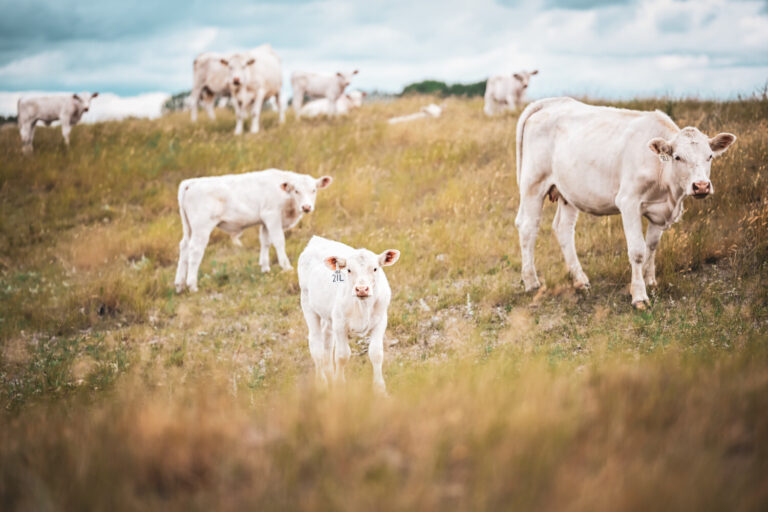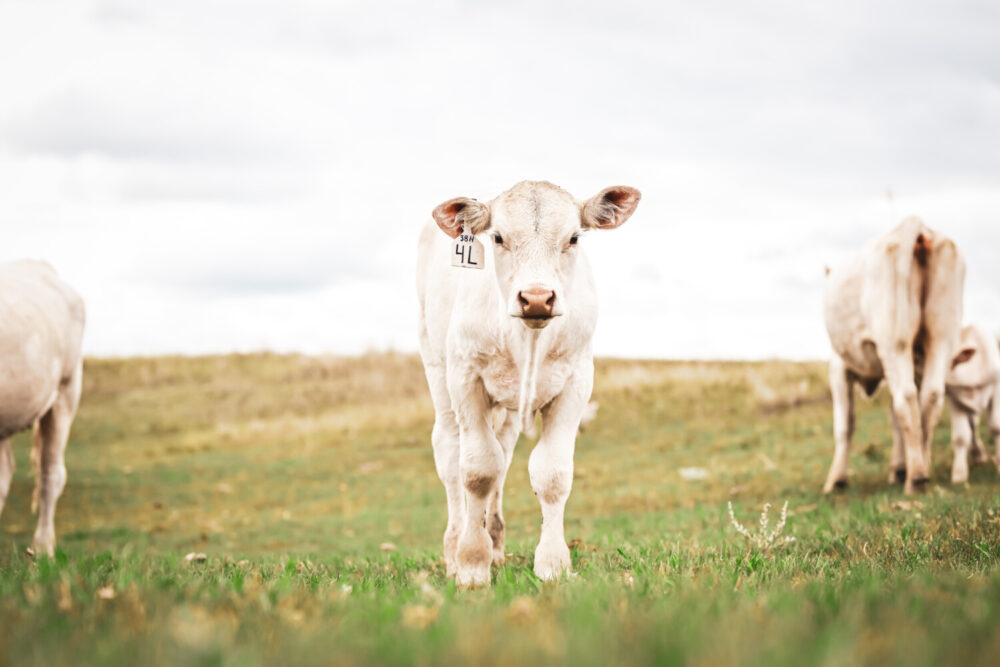
Systematically Selecting the Right Cattle
April 2024
When we try to picture the “ideal” beef cow, it’s easy to paint a picture of what she looks like in our mind; but that image likely looks a little different for each operation. Maybe the first thing that comes to mind is breed or hide color, fleshiness or udder appearance. Those and other traits can all be deciding factors depending on the operation. But the ideal, sustainable cow for a beef operation can be summarized with an even bigger picture view of the needs from a production animal. She has minimal maintenance and energy requirements but carries enough body condition to withstand feed shortages, gets pregnant on time, every time, produces enough milk to raise a healthy calf, and displays excellent maternal characteristics. Combined with your individual operation’s business model, these factors can help lead to a long-term system for selecting and retaining the right genetics in your cowherd.
Breeding objectives
What does spelling out a breeding objective look like? The first piece is looking at the most important descriptions of your ideal cow’s performance. For example, an objective could be to breed cattle as yearlings, calve unassisted and raise a good calf for sale at weaning, every year.

Fitting your operation
Determining these key points and a good breeding program, come down to asking the right questions.
- Are you breeding for terminal or maternal performance, and are your replacement heifers coming from your own herd, or an outside operation?
Some genetic traits could overlap both goals, but to harness the full benefits of each, maximizing one approach may prove more successful.
- How is your calf crop marketed?
Traits like carcass quality can be great selection tools, but if you sell calves as feeders after weaning, it’s hard to harness the benefits or premiums associated with those qualities.
- What operational constraints must be considered?
Environmental factors like available pasture and feedstuffs, along with management realities will play an impact on the right path forward with your breeding program.
With a start on overall breeding objectives, the next place to look is at possible tools to accomplish those goals.
Using selection tools
When selecting bulls or sires, expected progeny difference (EPD) data can be an important tool in connecting genetic indicators of specific animals to the goals of your operation.
- When selecting for maternal traits on an Angus EPD, percentile versus the breed in categories like CEM, SC, HP and $M would take precedence over other metrics.
Another index like En would take on more importance in environments with less available, or more expensive feedstuffs.
- On the same Angus EPD, an operation selecting for terminal performance selling for premiums would be looking at selection tools like RADG, YG, MARB, and $G would deserve priority.
Another consideration is the optimization of performance with heterosis, or hybrid vigor.
- Utilizing crossbred cows with outside breed influence has been shown in subtropical regions to increase production by 20% – 25% per cow; a number that can be a game-changer in an industry marked by tight margins.
- Depending on specific herd goals, splitting terminal and maternal priorities can maximize both selection tools available and breed complementarity to make a cow herd more efficient and sustainable.
Cows and replacements
There are two other considerations that determine attention when planning a sustainable genetic selection system: The balance between cow size and performance, and how replacement heifers are selected.
- Regional feedstuff considerations play an important role on target cow size. As a cow’s mature weight grows larger, her daily energy requirements inherently grow as well — which can be important in areas with more expensive feed or limited feed availably.
- While a larger cow tends to produce a larger calf, the diminishing return on the milk she produces versus the growth in energy requirement needs to be acknowledged. Data suggests that with a 27% increase in weight, only a 16% increase in milk production follows. (Weaber, 2024.) This means that not all of the cow’s increase in relative size can be passed on to her calf.
- Another metric impacted by cow size is stocking rate. Depending on the marketing goals of an operation, smaller cows could mean the potential for greater overall efficiency through the ability to run more cows — and raise more calves — with the same available pasture.
When looking at what heifers to select for replacement, timing of birth within the rest of the herd can be a solid indicator of performance to come.
- If a heifer was born early in the calving season, it means that her dam is more likely to have good fertility and started her pregnancy closer to first-exposure with a bull than cows calving later in the season. Translated to her offspring, that means a greater chance of getting pregnant on time, and consistently over her life in the herd.
- Combined, you may want to look at selecting heifers born in the first 30 days of the calving cycle, as well as in the middle 50% of adjusted weaning weight to prevent run up in mature weight and lactation.
Taking a wholistic view of the most important traits a cow can bring to your herd and tying them into the data behind your operation is the right path towards long-term business sustainability and efficiency. With the right system in place and the management decisions to back it up, your ideal cow can be more than just a picture — she can be your reality.
Weaber, B. (2024). Systematically Selecting the Right Cattle for You. In NCBA.
This article contains third-party observations, advice or experiences that do not necessarily reflect the opinions of Vermeer Corporation, its affiliates or its dealers. Individual results may vary based on care and operation of machine and crop and field conditions, which may adversely affect performance.
Vermeer and the Vermeer logo are trademarks of Vermeer Manufacturing Company in the U.S. and/or other countries.
© 2024 Vermeer Corporation. All Rights Reserved.

